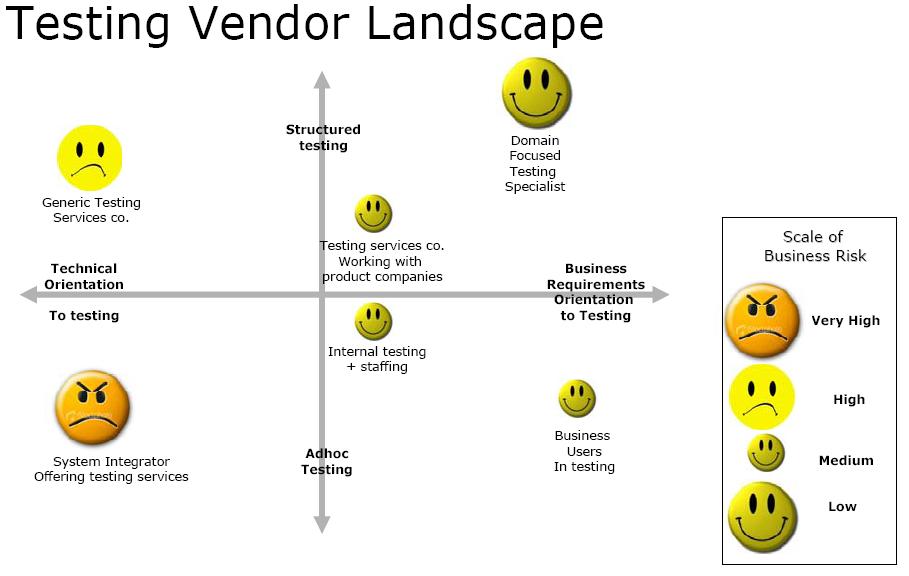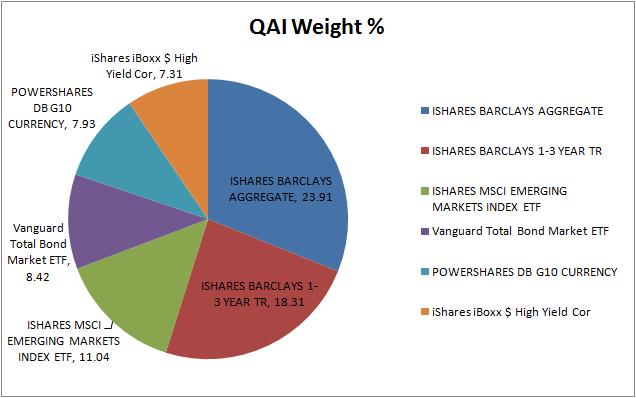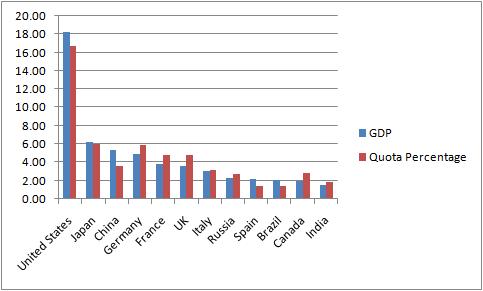I was overwhelmed with the entries to this edition of the carnival. I want to thank everyone for participating and hope they keep coming back.
Here are the entries from this week’s carnival.
Cody Butler presents How Do Mutual Funds work? posted at Investment-For-Beginners Blog, saying, “A basic overview of the way in which mutual funds work and who they are for.”
Handy Saputra presents How Does A Home Mortgage Loan Work? posted at Home Loan and Mortgage Info, saying, “A mortgage is commonly obtained by a home owner who has an outstanding debt or is getting a loan out from a bank or other government operate establishment. The mortgage transfers the interest of the property as a form of collateral to the lender. The home owner will then have a set stop of time in which they must pay back the overall of the borrowed money. If they fail to pay back the money they will end trailing their mortgaged property and assets!”
Diego Cervantes presents Top 50 Economics Blogs posted at Bankling.
Destroy Debt presents Good Til The Last Drop: Use it Before You Throw it In the Trash posted at Destroy Debt.
CreditCardAssist.com presents Ever Look at Your Credit Card Closely? posted at Credit Card Assist.
Apply4-credit presents Are Credit Card Protection Plans Worth the Money? posted at Apply4-Credit.
Matthew Paulson presents The Credit Ratings Credit Card Companies Prefer You Did Not Know posted at American Consumer News.
Debt Freedom Fighter presents Looking for a Way to Repair a Bad Credit Score posted at Discover Debt Freedom!.
Ben presents Eight Ways to Beat Bad Customer Service posted at Money Smart Life.
Debt Free Destiny presents 7 Basic Reminders to Help You Handle Your Personal Finances Successfully posted at Debt Free Destiny.
Leave Debt Behind presents Are Pay As You Go Cell Phones Worth It? posted at Leave Debt Behind.
The Smarter Wallet presents Job Hunting Tips: How To Deal With Losing Your Job posted at The Smarter Wallet,
Verna Morris presents Five Experts Agree: You Need a TIPS ETF In Your Retirement Portfolio posted at ETFdb.
Lavender presents Peter Schiff Vlog Report posted at News for Freedom Daily, saying, “Peter Schiff, an economic advisor, gives a report about what to do in this economy and whether or not the worst is behind us”
Debt
Silicon Valley Blogger presents Discover More Card Offers $50 Cash Back Bonus posted at The Digerati Life
Brian McKay presents 30 Year Mortgage posted at MonitorBankRates.com, saying, “30 year mortgage rates are at historic lows. One can find rates from most banks under 5 percent. Last week’s Primary Mortgage Market Survey released by Freddie Mac has 30 year rates at 4.78 percent”
Economics
Bank Savings Review presents Four Banks Give Back TARP Already posted at Bank Savings Review, saying, “We’ve got to hand it to the banks that’s already been able to hand back the TARP. Hopefully, only responsible banks will survive after this crisis so we promote responsibility.”
Beno Varghese presents An Average Person?s Tax Dollars posted at Beno Varghese dot-com.
Investments
Patrick @ Cash Money Life presents Pertuity Direct Peer to Peer Lending Review posted at Cash Money Life, saying, “Reiew of a new P2P lending platform that invests in a mutual fund comprised of peer to peer loans – paying out around 10% interest. This gives investors the chance to “be the bank.””
Michael presents How Much Car Insurance Do You Need? posted at Vital Motion, saying, “When shopping for car insurance, it is important to know how much insurance you really need.”
Walter W. Fouse presents 7 Ways to Pick the Best Noload Mutual Funds and ETFs posted at Best No Load Funds, saying, “The vast body of investment research studies show that there really are better approaches to buying and owning mutual funds and ETFs. You do not need to frantically chase fund performance. Performance chasing simply does not work.”
Richard M. Rothschild presents The Top 14 Low Cost Taxable United States Bond Mutual Funds (Low Minimum Deposit) posted at Bond Market Index Funds, saying, “The top 14 low cost taxable US fixed income funds with a $10,000 or lower initial deposit. Low investment management fees are very important with fixed income funds. Simply put, if you pay higher bond mutual fund fees, then these bond management expenses tend just to be a deadweight loss to you. When you pay more in bond mutual fund fees, you are just wasting your money.”
Stock Trading Brokers presents SEC Considers Proposal for Uptick Rule posted at Stock Trading Brokers, saying, “Bring back the uptick rule. There was actually no harm done when it was there. When it’s not broken, don’t fix it. Now that people have shed light on it, of course there are criticisms.”
Ripe Trade presents Ripe Trade: Leveraged and inverse ETF pitfalls posted at Ripe Trade, saying, “This post explains the underperformance of leveraged and inverse ETFs because they are designed to track the underlying index based on a 1 day performance, these ETF’s wont track well over longer periods of time.”
Silicon Valley Blogger presents Zecco vs TradeKing: Which Online Stock Brokerage Account To Choose? posted at The Digerati Life,
Tallahassee Real Estate presents How To Make An Offer In Today’s Real Estate Market posted at Tallahassee Real Estate Blog, saying, “I was talking with a Tallahassee REALTOR® yesterday and we were discussing an offer he had just made on a foreclosure offering in Tallahassee. We discussed strategy for making an offer to a bank (the home had been foreclosed upon and was for sale by the bank that held the financing on the home) and how the strategy had to be different than when making an offer to a typical homeowner.”
Summer Munyon presents How To Construct A Well-Written Real Estate Offer posted at Really Better Real Estate, saying, “This weekend I received a text from a friend whose Tallahassee home I recently sold. She plans to place an offer on a home in TX this weekend and wanted to know the binder amount that she should place on the home. Literally, the text states that the list price is $350,000. She plans to make an offer of $300,000, and how much binder should she offer? Unfortunately, it’s far more complicated than a numeric reply with the “send†button.”
VC presents When Will The Economy Turn? posted at The Penny Daily, saying, “Has the stock market turned for the better? This article discusses what to look for in the upcoming weeks that will tell us if it is safe to start investing in the market again.”
PicktheBrain presents Investing in Stocks for Beginners posted at Beginner Investing.
FIRE Getters presents What is the Rule of 72? posted at FIRE Finance.
MoneyNing presents Ins and Outs of a Stock Exchange posted at Investing School, saying, “Stock exchanges perform a critical function in the world of trading. Find out what they do by going through the article.”
Darwin presents Advanta High Yield Notes: 8.5% – 11% Yield Worth the Risk? posted at Darwin’s Finance, saying, “This article highlights the risks and benefits of extreme high yield investment notes at 8-11%.”
Dan at Everydayfinance presents High Yield Bond ETF – 12% Yield + Share Gains Looking Attractive posted at Everyday Finance, saying, “This article highlights a small but strong performer you’ve never heard of that has increased dividends for 24 consecutive quarters.”
Personal Finance
KCLau presents 5 Ways To Take Charge Of Our Finances posted at KCLau’s Money Tips, saying, “Are we doing the right things when it comes to managing our finances? Ask yourself five questions to know if you’re on the right track.”
Nancy Muller presents French Toast Club posted at Recession Depression Therapy, saying, “Learn the step-by-step process to never paying full price again.”
Khan presents The Economics of Education posted at Higher Education and Career Blog, saying, “A breakdown of non-traditional education options for businesses.”
Frank Vertin presents Just Buy Index Funds Directly posted at NO LOAD INDEX FUND, saying, “Buying an S&P 500 index fund through an investment counselor can substantially increase your initial purchasing costs and and drive up your annual management expense fees. Unfortunately, the vast majority of individual investors buy mutual funds and ETFs through brokers and investment advisers. Rarely do financial advisors recommend that you buy index funds with low fees. This is because low cost, no load mutual funds do not pay them as well as loaded, high fee mutual funds.”
Cap presents Is It a FICO or FICA Credit Score? posted at StopBuyingCrap.com, saying, “Clearing up the financial acronym confusion.”
Buck Weber presents 10 Interesting Ways to Make Some Side Cash posted at THE BUCK LIST, saying, “These days many of us are VERY interested in finding supplemental income. The following is a list of 10 interesting possibilities to make some side cash.”
Peak Personal Finance presents 3 Smart Personal Finance Tasks You Are Probably Putting Off posted at Peak Personal Finance.
Ralph Jean-Paul presents Building Self-Discipline posted at Potential 2 Success, saying, “The most disciplined business people are usually the most organized, efficient and successful. They are also the people that make the most money. Learn to build self-discipline in your personal and professional life and see the difference it will make.”
MoneyNing presents Everbank Review posted at Money Ning, saying, “EverBank is one of the best banks and it offers a very high rate with its money market account and even checking account. You should check it out.”
PFCreditCards presents Cost of Wells Fargo Business Checking vs EverBank posted at PF Credit Cards, saying, “I’m done with Wells Fargo. No fees, high interest rates, same hassle free as traditional banking. EverBank is for me.”
Marjorie presents Free Accounts Make All the Difference posted at Wealth Junkies, saying, “Any checking account you have to pay for is a raw deal: banks make their real income off of money deposited, by lending it out. That means that any fees you pay for your personal checking account are just icing on the cake. It’s pretty likely that you’ll have an account for your entire life and even five bucks a month for the rest of your life adds up.”
JC presents Want to Save Money? Bring Benjamin Franklin posted at 6Bubbles – Grad School, Money, Life.
Kim Staudenraus presents When Frugal Costs You Money | Tranquility Financial Visioning posted at Tranquility Financial Visioning, saying, “There is a fine line in the sand between frugal and cheap. Cheap can cost you money, while frugal can save you money. Do you know the difference?”
Steve Faber presents Auto Theft Statistics – Where is the Best and Worst Place for Car Theft? | Secrets to Cheap Car Insurance posted at Cheap Car Insurance.
Credit Shout presents Amazon Credit Card Review posted at CreditShout.
MoneyNing presents 25 Debt Reduction Tips For Your Immediate Action Plan posted at Money Ning, saying, “There’s no time to waste. Get your act together and fix your debt right away.”
Stocks
Larry Russell presents Most Individual Investors Are Poor Personal Portfolio Managers | Personal Investment Management posted at THE SKILLED INVESTOR Blog, saying, “Investors more easily understand investment costs that are directly measurable, such as fees deducted on investment statements. However, many investors ignore or are unaware of the opportunity costs of their sub-optimal investment behaviors. Opportunity costs are usually much more difficult to measure directly, but these investment costs can be even higher than more visible investment fees.”
Investing School presents Etrade vs Tradeking vs Zecco – Trading Commissions Comparison posted at Investing School, saying, “Have you written Etrade off just because the commissions are higher? Is Zecco or TradeKing better? This takes a look at these three stock brokers on a fees comparison.”
Jae Jun presents Best Small Companies Fair Value Estimates posted at Old School Value, saying, “Fair value estimates of 42 good stocks. No day trading or speculation involved.”
Nesher presents Global Watch List to monitor your trades from around the globe posted at Internet Stock Trading for Beginners.
That concludes this edition. Submit your blog article to the next edition of OneMint – Economy and your Finances using our carnival submission form. Past posts and future hosts can be found on our blog carnival index page.




